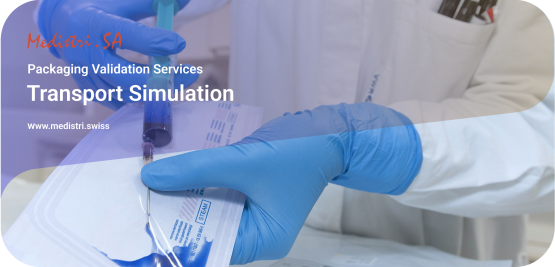(Download: Transport Simulation in PDF by Medistri)
Transport Simulation (also known as Transit Testing) is an essential process that ensures the quality and safety of products during transportation. It involves subjecting products to various tests to simulate the conditions they may encounter during transit. Transport Simulation is critical for companies that want to reduce the risk of damage, loss, and returns.
Transport Simulation determines whether a product packaging is appropriate and robust enough for the product it holds. It requires the packaged product to be subjected to various environmental as well as dynamic conditions. Some of the tests include temperature and humidity storage simulation and simulated drop testing.
Transport Simulation is essential for companies that want to ensure product quality and safety during transportation. By subjecting products to various tests, companies can identify potential issues and make necessary improvements before shipping the products.
Transport Simulation also reduces the risk of damage, loss, and returns, which can be costly for companies. Moreover, transit testing helps companies comply with industry standards and regulations, ensuring that their products meet the required safety and quality standards. Transport Simulation help companies identifying potential issues in order to do the necessary improvements before shipping their products.
Transport simulation is done by subjecting the packaging and the product to various mechanical and environmental hazards that they may encounter during transportation.
👉 Some common types of mechanical and environmental hazards that are simulated during transport simulation include :
- Vibration.
- Shock.
- Compression.
- Temperature.
- Humidity changes.
- Atmospheric pressure changes.
The transport simulation is usually conducted in a laboratory or testing facility using specialized equipment designed to simulate the specific transportation hazards that the packaging and product may face. For example, a vibration table may be used to simulate the effect of vibrations that occur during transport, while a drop tester may be used to simulate the impact of a drop or shock.
👉 After the transport simulation testing is completed, the packaging and product are evaluated for any damage or defects that may have occurred during the testing.
The evaluation is typically done by trained technicians or quality control personnel who will inspect the packaging and product for any visible signs of damage or defects. If any damage or defects are found, the packaging and product may need to be retested or modified to improve their ability to withstand the transportation hazards. Modifications may include changes to the packaging design, materials, or cushioning materials.
👉 If the packaging and product pass the transport simulation testing and are found to be in compliance with the relevant standards and regulations, they can be released for shipping and distribution.
ASTM D4169 is the most commonly used standard for transport simulation in packaging. This standard outlines a series of test methods that can be used to simulate the effects of various transportation hazards, including vibration, shock, compression, atmospheric pressure, and temperature and humidity changes.
ASTM D4169 includes several test sequences, each designed to simulate a specific type of transportation hazard. For example, Sequence I simulates the hazards of a small parcel delivery system, while Sequence II simulates the hazards of a less-than-truckload motor carrier. Each sequence includes specific testing procedures and performance criteria to evaluate the packaging's ability to protect the product during transportation.
In addition to ASTM D4169, there are other standards and guidelines that may be used for transport simulation in packaging, depending on the specific industry and product being transported. For example, the International Safe Transit Association (ISTA) has developed a series of test standards for packaging that are widely used in the transportation industry.
There’s also ISO 11607-1, which specifies the requirements related to the compliance of the packaging for sterilised medical devices, including materials, sterile barrier systems and packaging systems.
It is important to note that transport simulation testing is only one aspect of a comprehensive packaging validation program, which also includes other types of testing, such as microbial barrier testing, integrity testing, and shelf-life testing, to ensure that the packaging and product remain safe and effective throughout their intended shelf-life.
Should you fully validate your packaging system or should you simply test one particular characteristic of your packaging, Medistri laboratory is accredited and highly experienced for the most common tests methods provided by the regulatory agencies.
🎯 To learn more about Medistri’s Transport Simulation services, visit on our website at www.medistri.swiss or directly contact our team at contact@medistri.swiss.
— The Medistri Team
#Medistri
